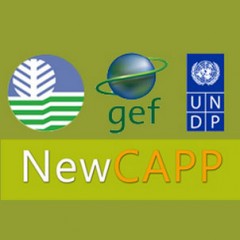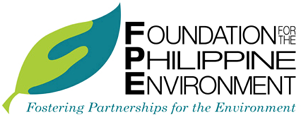Biodiversity Conservation Strategies
2011: The New Conservation Areas in the Philippines Project (NewCAPP)

More recent efforts utilizing updated and increasingly relevant approaches have also been made in assigning “priority conservation area” status in Philippine territories. These are designed to complement the country’s established protection systems such as the NIPAS Act of 1992 and the strategies set by the 2002 PBCPP, which still stands as the framework legislation for protected areas management in the country.
More recent efforts utilizing updated and increasingly relevant approaches have also been made in assigning “priority conservation area” status in Philippine territories. These are designed to complement the country’s established protection systems such as the NIPAS Act of 1992 and the strategies set by the 2002 PBCPP, which still stands as the framework legislation for protected areas management in the country.
An example of these recent initiatives is NewCAPP (New Conservation Areas in the Philippines Project), which is a collaboration between the Department of Environment and Natural Resources-Biodiversity Management Bureau (formerly the Protected Areas and Wildlife Bureau or PAWB) and the United Nations Development Programme (UNDP) through the Global Environment Facility (GEF).
Started in 2010, NewCAPP focuses on the expansion and diversification of the terrestrial protected area (PA) system in the country in light of the notable limitations of the current PA system’s effectiveness, such as inadequate prioritization or biogeographic representation of existing PAs and weaknesses within the scope of capabilities of DENR-PAWB itself and the more decentralized Protection Management Boards.
Eyeing accelerated expansion and more comprehensive and representative coverage of key biodiversity areas (KBAs) with sustainable adaptive management as the key to successful long-term biodiversity conservation efforts in the country, NewCAPP has identified the following new terrestrial protected areas:
| KBA | Location | Biogeographic Location | Potential Governance Type |
| Balbalan - Balbalasang National Park | Cordillera Administrative Region; Kalinga and Mountain Provinces | Greater Luzon | Ancestral Domain |
| Zambales Mountain Range | Regions 1 and 3; Zambales and Tarlac | Greater Luzon | Ancestral Domain |
| Mts. Irid-Angilo and Binuang | Region 4A; Rizal, Bulacan, Quezon | Greater Luzon | LGU and IP Communities in Ancestral Domain |
| Polillo Islands | Region 4A; Quezon | Greater Luzon | LGU-managed |
| Mts. Iglit-Baco National Park | Region 4B; Mindoro Oriental and Mindoro Occidental | Mindoro | NIPAS, Ancestral Domain, ASEAN Heritage Site |
| Nug-as Lantoy | Region 7; Cebu | Greater Negros-Panay | Community-managed |
| Mt. Nacolod | Region 8; Southern Leyte | Greater Mindanao | LGU/DENR Co-managed |
| Mt. Hilong-hilong | Region 13; Agusan del Norte, Surigao del Norte, Surigao del Sur, Agusan del Sur | Greater Mindanao | Mix of governance types, under the Eastern Mindanao Biodiversity Council |
| Tawi-Tawi Island | ARMM, Tawi-Tawi | Sulu | ARMM, LGU, and Local Communities |
To date, a total of 240 protected areas have been identified, including the initial 202 components stipulated under the NIPAS Act of 1992. The range of national parks, game refuge and wildlife sanctuaries, nature reserves, wilderness areas, mangrove reserves, watershed reservations, fish sanctuaries, and protected landscapes and seascapes, among others, covers 5.45 million hectares at present. A more detailed listing of these protected areas per region are available on the DENR-BMB website (see Facts and Figures and Maps).
Initiatives such as NewCAPP are an encouraging move forward for the state of biodiversity conservation in the Philippines. Worthy of note is the evolution from a centralized and government-centric approach to a more diversified, inclusive, and people-oriented strategy that enables local communities to build upon long-standing customary practices and traditional knowledge systems to effect context-specific resource protection measures in the various key biodiversity areas and priority conservation areas that the country possesses.
Beyond Boundaries
On top of local action, also encouraging is the fact that the Philippines continues to be consistently active in international and multisectoral discussions and agreements on biodiversity conservation, as well as other larger-scaled environmental protection efforts (see box story). The Convention on Biological Diversity (CBD), Convention on International Trade of Endangered Species of Wild Fauna and Flora (CITES), the Ramsar and Basel Conventions, and the United Nations Framework Convention on Climate Change (UNFCCC) are three key examples, just to name a few. Participation in these efforts have, in turn, earned the Philippines internationally recognized citations and designations, such as those named under UNESCO’s World Heritage Sites, ASEAN Heritage Parks, and several others.
The recognition of the value of shared responsibility is seen to go a long way in creating sustainable change in efforts designed to deal with the biodiversity crisis in this critical global hotspot.
References
- Department of Environment and Natural Resources-Protected Areas and Wildlife Bureau (New Conservation Areas in the Philippines Project). Undated. About Philippine Biodiversity. Last accessed on November 11, 2013, http://www.newcapp.org/about-philippine-biodiversity.php.
- United Nations Development Programme-Global Environment Fund, Department of Environment and Natural Resources-Protected Areas and Wildlife Bureau (New Conservation Areas in the Philippines Project). 2012. 2012 Annual Report. Philippines. (Online: http://www.newcapp.org/images/whatsnew/download/04302013115148YearEnd2012.pdf)

 DISPLAY CALENDAR
DISPLAY CALENDAR
 Read Policy Briefs
Read Policy Briefs
 View Our Partners
View Our Partners
 Access Grants MIS
Access Grants MIS
 Login to Webmail
Login to Webmail